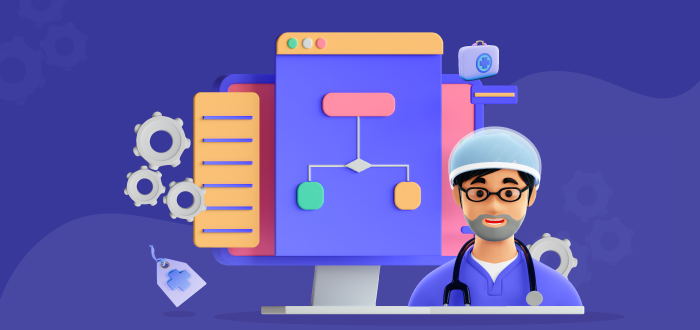Recent studies reported that 49% of healthcare staff are experiencing “burnout.” One primary reason is that healthcare workers spend 26-41% of their time on paperwork.
Repetitive tasks like collecting patient data, sharing prescriptions, billing, patient onboarding, or claims management constitute a significant part of healthcare providers’ daily routine. While essential, these tasks are also tiresome and time-consuming.
But thanks to technology, your staff can easily save time by automating healthcare workflows!
Workflow automation in healthcare is gaining popularity, and for all the good reasons. It helps to reduce the burden of documentation and repetitive tasks for healthcare providers and shift their focus towards critical tasks that need experience and strategic thinking skills.
The growth in poorly designed digital health records and healthcare metrics has required that physicians spend more and more time on tasks that don’t directly benefit patients, contributing to a growing epidemic of physician burnout.
Ashish Jha, Veterans Administration physician and professor, Harvard Chan School.
It is high time you take care of your healthcare providers so they can take care of patients.
What Does Workflow Automation in Healthcare Mean?
Workflow automation in healthcare refers to using technology to automate and streamline processes for healthcare facilities. This includes everything from scheduling appointments, managing patient records, staff activities, rosters, billing, healthcare insurance, and more.
The aim is to improve efficiency, reduce errors, and provide better patient care.
Advantages of Workflow Automation in Healthcare
Automation can bring many benefits and advantages to healthcare workflows including:
- Improved accuracy: A simple mistake in healthcare can cause severe results. When healthcare providers add information manually, there are always chances of human error. Apart from risking life, medical errors cost $40 billion annually to healthcare providers.
However, with automation, you can upload data accurately without leaving any space for mistakes.
- Enhanced communication and patient care: Regular communication between the patient and the healthcare provider is essential for improving overall healthcare outcomes. Automation can ensure that patients receive timely and consistent communication, enhancing the quality of care.
For example, a common challenge is no-shows. People miss appointments just because they forget. You can overcome this challenge by simply sending a reminder before the appointment. This way, you ensure patients get the required care while saving time and money.
- Cost savings: Automation can reduce the cost of healthcare in multiple ways. It saves you from the damage that may have occurred due to medical errors. With improved efficiency, it saves the cost of overtime or extra labor.
- Improved data management: Patient data in healthcare is vital for delivering proper care. However, if the data is stored physically and manually,
- Improved compliance: Healthcare data is sensitive information about patients. Thus, all healthcare organizations must follow the rules and regulations to ensure privacy. For example, HIPAA (Health Insurance Portability and Accountability Act) aims to protect the Health Information (PHI) and Personally Identifiable Information (PII) of patients.
Automation can ensure healthcare providers comply with relevant regulations and guidelines by configuring usage rights. With this, only authorized personnel will be able to access the data.
- Improved patient satisfaction: Everything adds to patient satisfaction, from appointment scheduling and short wait times to simple onboarding or discharge. It is essential to keep processes quick and straightforward to keep patients happy. With automation, you can improve the patient experience. For instance, implementing automation to collect feedback will provide insight into what patients liked or disliked.
An automated scheduling system allows patients to book an appointment quickly. Moreover, tracking patient appointment cancellations and confirmations reduces hospital wait time. Similarly, you can implement multiple workflow automation to improve patient satisfaction.
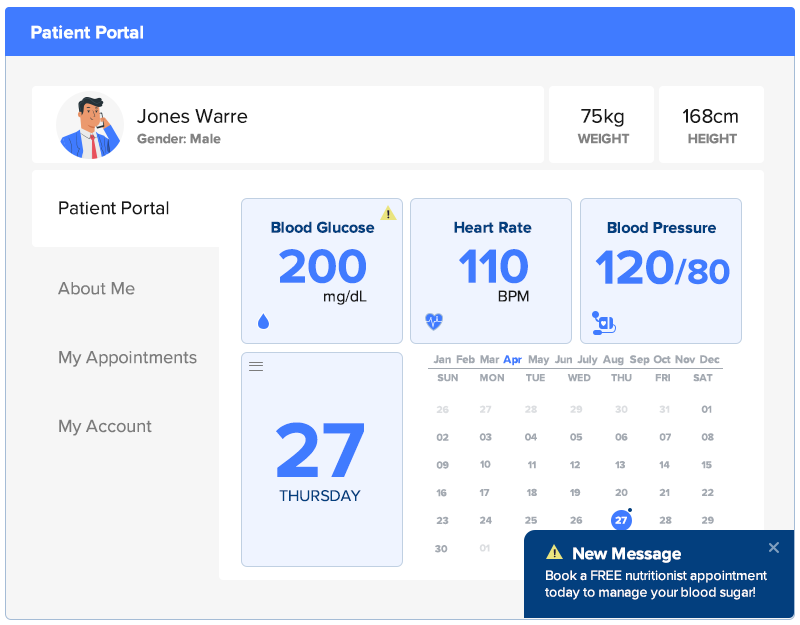
Top 7 Workflows in Healthcare to Automate
To give you a start, below are a few examples of workflows in healthcare that you can automate to improve efficiency and deliver better patient care.
1. Appointment Scheduling Process
68% of patients say they are more likely to choose a healthcare provider with better online access to book, modify, or cancel appointments.
An online appointment booking system can help you automate the process. There are several ways to implement this;
- You can start by having the option to book an appointment on your website.
- Installing chatbots can also help patients with the basic queries they may have before making any decision.
- Nowadays, organizations are also spending money on developing separate patient portals to execute the complete process from appointment booking to consultation.
Benefit: With online portals, patients can book appointments themselves. They need zero staff assistance, which saves both of their time. Sametime, having multiple sources to book appointments also increases patient intake, which will result in increased revenue.
Below are the workflow automation examples you can use.
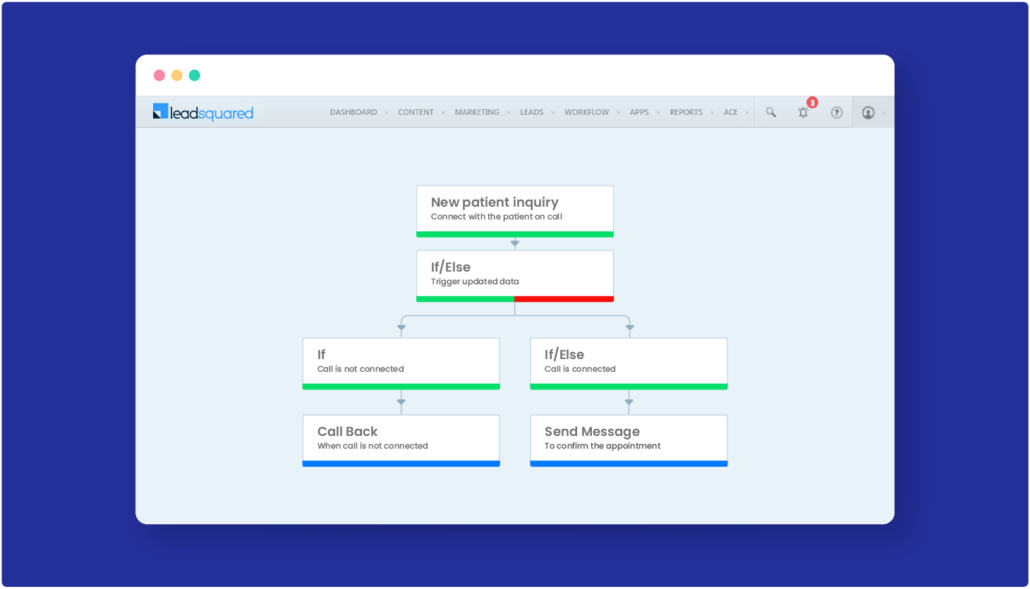
2. Patient Admission and Discharge Process
The process of admitting or discharging a patient can be lengthy and frustrating, both for the patient and the provider. A lot of paperwork is involved in both processes.
Collecting information through manual forms before a consultation takes significant time. This can cause long wait times for other patients waiting to be seen.
- 84% of people say that wait time is either “very important” or “somewhat important” in their overall experience.
- 43% of patients say waiting time is the most frustrating part of visiting the doctor.
- 30% of patients have walked out of an appointment because of long waiting times.
- 1 in 5 patients change doctors because of long wait times.
Doctors and the staff also spend a lot of time collecting information. Since they do it manually and have no records for the next appointment, it becomes a repetitive process.
At the same time, discharge billing is a time-consuming task in itself. The longer the patient stays at your facility, the more time the billing process will take. Studies also say that 41% of patients are not confident that the billed amount is correct because the manual discharge process is inefficient and has chances of human errors.
Approvals are yet another process that involve multiple departments and increase discharge time.
However, automated patient admission and discharge processes can reduce time. With e-signature capabilities, you can further simplify the process.
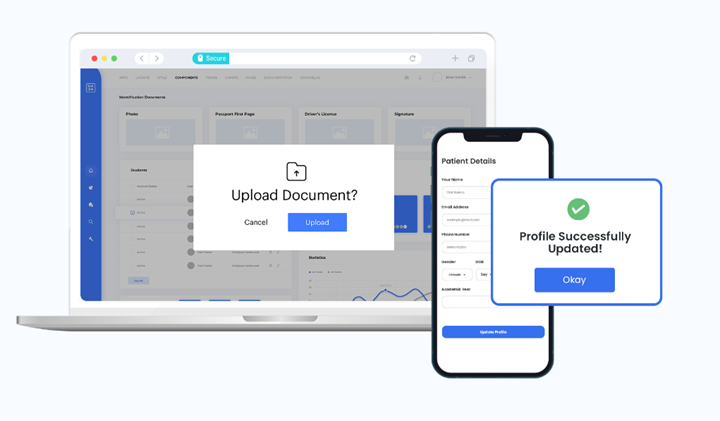
Benefits: An efficient admission and discharge process is key to improving patient experience. Automation will save your staff from the manual work of filling out forms, creating bills, and getting approvals while reducing the chances of errors.
3. Managing Health Records
Healthcare providers take a significant risk in entering information manually into EHR. A small error while entering patient data can lead to mistakes in the patient’s diagnosis. In the worst case, it can lead to the patient getting the wrong treatment.
Along with an EHR, a healthcare organization’s workflow might benefit from automation. For instance, there is no potential for errors if your hospital automates the procedure across medical test labs and integrates the EHR platform. You can automatically transfer lab reports and other information into an EHR using automation software. This aids doctors in accurately diagnosing patients’ conditions and prescribing the right course of treatment.
Benefit: Automating health record management reduces human errors. You can confidently provide proper care to your patients.
4. Patient Communication
70% of patients say they prefer medical providers who send them emails or text messages. This could be for preventive or follow-up care and other reminders or self-care tips.
Patients communicate with a healthcare provider at many stages of their healthcare journey. Starting from the point, they wish to book an appointment. You can install bots to answer patients’ booking queries and help them secure appointments. You can also integrate IVR to resolve general questions and only pass the critical ones to your staff.
Along with that, you can also automate reminders for upcoming appointments and for taking medications post-consultations. Automation can also help you improve patient engagement with using call reminders, email automation, and SMS to share self-care tips and treatment options.
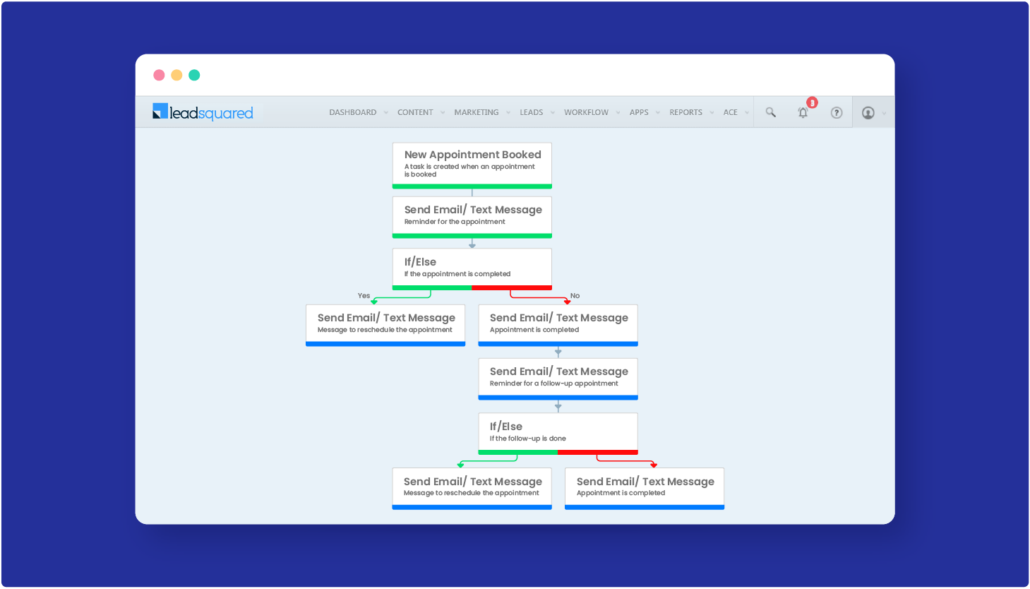
Benefits: Automation can reduce dependency on the staff and help resolve inquiries faster. Regular communication also improves patient engagement by 2X. Overall, you can improve patient experience and help them achieve better healthcare results. Of course, it also saves some more time for your staff.
5. Staff and Doctor Onboarding
As mentioned earlier, hiring the right staff is challenging for most healthcare organizations. You would like your staff to start as soon as possible. But instead, they end up spending their initial days filling out multiple forms and submitting various documents.
Introducing an online portal for your staff onboarding can save both of your time, and they can start focusing on your patients. You can automate the document collection process and also store records digitally.
Similarly, your doctor’s onboarding process can be automated to save them from the tedious form-filling process.
Benefits: Automating the process reduces onboarding time. Since you will have the documents stored digitally, your staff or doctors will not have to share them again and again. Having an automated onboarding process also improves the overall experience of the staff and doctors.
6. Managing Staff Activities and Roster
The Healthcare industry works 24/7 to make sure the patients get the proper care. The staff works in shifts, and managing their activity and roster is an add-on task for the organization. The process often gets delayed due to the non-availability of a single person.
There are many cloud applications available that can help you automate the schedule of your employees. They can also help you get approvals for your schedules and notify staff immediately.
You can also automate the distribution of tasks based on the roster. For example, automation will automatically distribute inquiries only to operational staff.
Benefit: You can inform your staff about their schedule without confusion. You can reduce response time on inquiries through automation to improve overall team efficiency.
7. Insurance Claim Processes
Healthcare organizations claim billions of insurance every year. The process requires you to collect a large amount of information from patients and healthcare providers. Handling a large amount of data manually takes a lot of time and increases the chances of human errors.
You can automate the insurance claim process using RPA tools. The tool will collect and arrange all the data to file your claim.
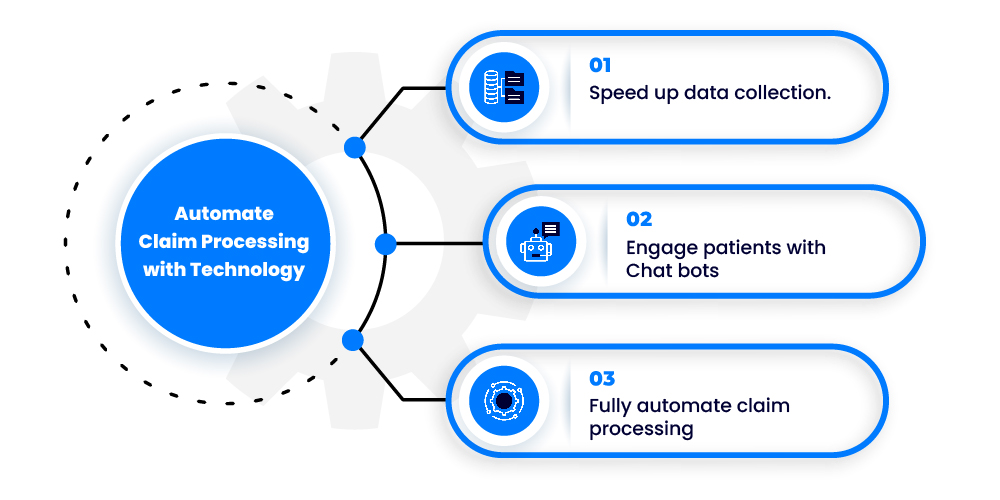
Benefits: Automating insurance claim processes can increase efficiency and save up to 70% of process handling time. You can also mitigate any chance of human error and save from any financial loss.
Use LeadSquared to Automate Healthcare Workflows
Workflow automation tools help healthcare businesses automate patient intake, patient communications, and many other workflows.
Implementing LeadSquared’s HIPAA-compliant healthcare CRM helps you improve:
1. Lead and task management
You can assign tasks and notify your staff for follow-ups. Enable your teams to call, email, and message patients with LeadSquared’s healthcare CRM while complying with HIPAA guidelines.
The CRM also helps you create multiple journeys and workflows for teams and functions like physician onboarding, sales, marketing, and operations.
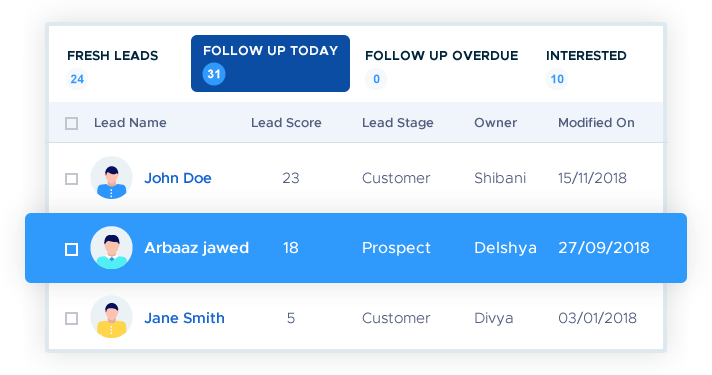
2. Patient intake automation
Increase patient intake by automatically capturing leads and distributing them to the correct department for follow-ups. Collect records through digital intake forms and self-serve patient portals to simplify the intake process.
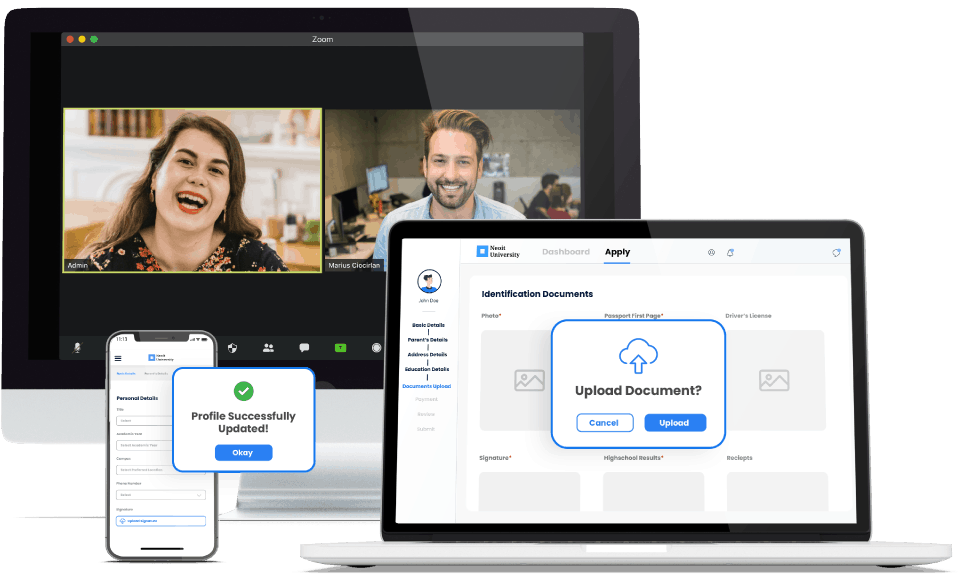
3. Communications management
Utilize LeadSquared’s healthcare CRM platform to use autoresponders for web inquiries and built-in dialers.
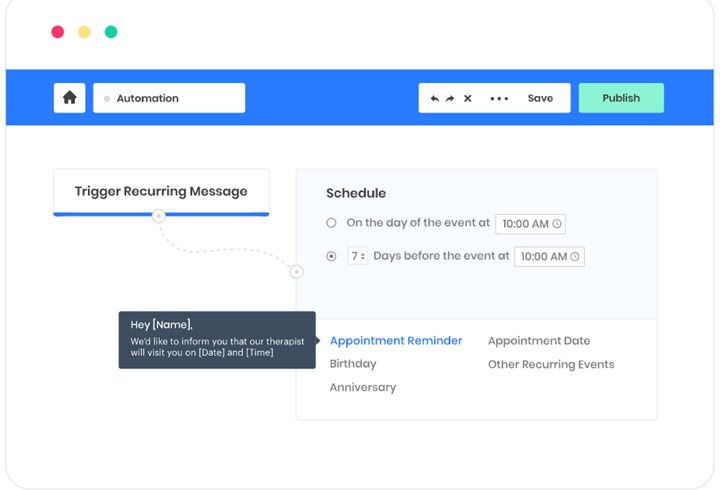
Wrapping Up!
We can all agree that workflow automation in healthcare can improve the efficiency and effectiveness of every healthcare organization. Digital tools reduce the burden of administrative work on your staff so they can focus on providing high-quality care to patients.
If you’re looking for a tool to implement automation that reduces errors, improves patient safety and patient experience, check out LeadSquared.
Book a personalized demo today!







